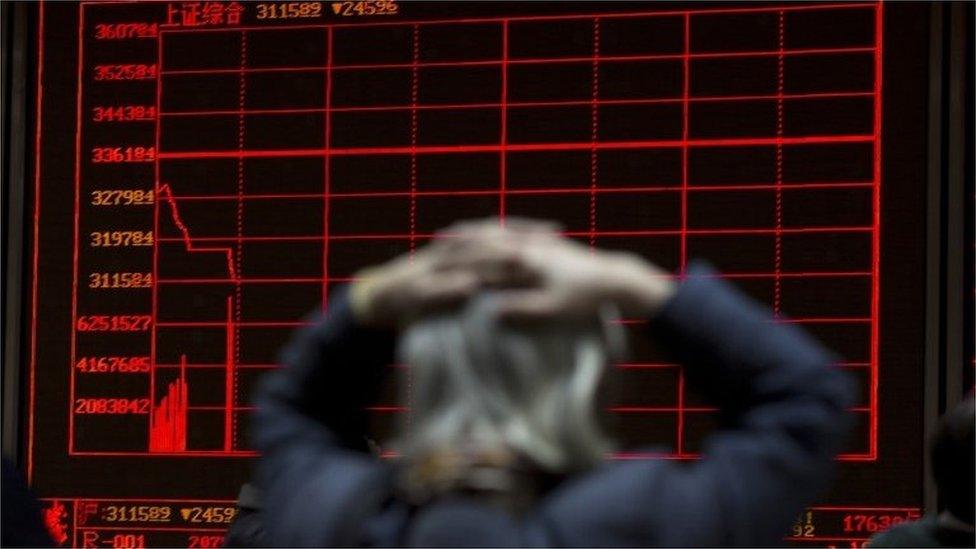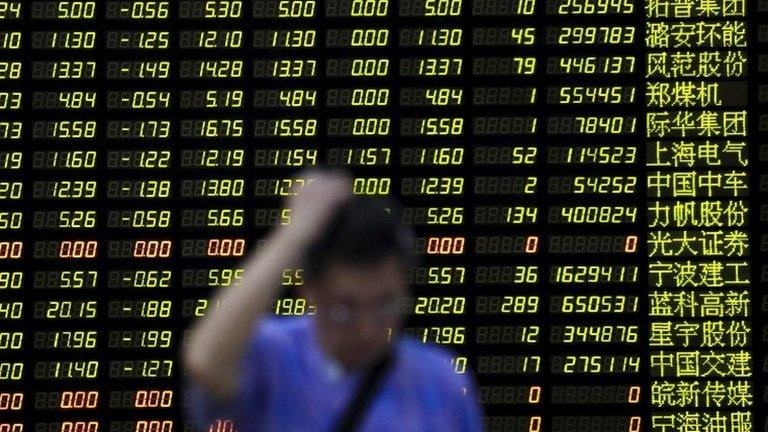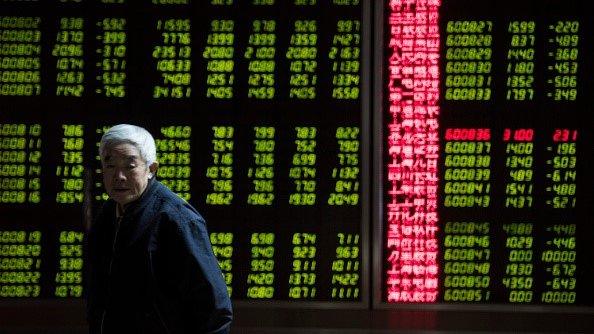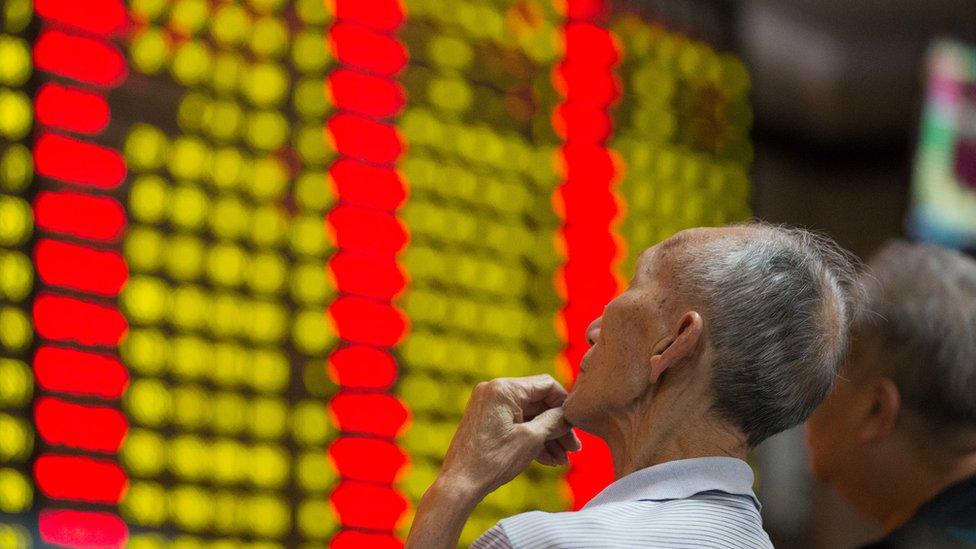China's emotional ride is not over
- Published
- comments

Chinese stocks' nosedive triggered the second trading halt of the week on Thursday
What a week it's been.
For many in China it was a financial - and probably emotional - rollercoaster.
And for those of us watching around the world, there's come the realisation that what goes on in the world's second biggest economy has a very real impact on our lives.
We began the week with brand-new circuit breakers that did the exact opposite of what they were intended to do. Instead of calming investors, they caused them to panic, leading to the stock market shutting down twice in the space of the week. There was mayhem on regional markets, and panic ensued on bourses in the West too.
But in the past 24 hours some relief. Thursday saw China's stock markets abruptly shut after 29 minutes of trading, the shortest trading day in its history. Then the circuit breakers were suspended and the yuan allowed to rise.
That boosted sentiment and lifted Chinese shares, prompting other markets to go up too - initially.
Structure
Problem solved?
Not so fast.
The structural problems within China's economy remain. And one of the key illustrations of that problem can be found in its currency, the yuan.
The depreciation of the yuan earlier in the week is what in part caused sentiment to sour amongst investors, and the higher value of the currency this Friday, is what's brought back some sanity back to Chinese shares.
So, what is it with the yuan? Here are three key things:
Why was the yuan allowed to weaken this week?
The People's Bank of China sets the onshore midpoint rate for the yuan every day. It is meant to be a guiding rate for the way in which it wants the yuan to trade. For the last eight days running, it's allowed the yuan to depreciate. That caused many in the markets to speculate that China is trying to weaken its currency and export its way out of a slowdown. But some analysts say this isn't true and indeed the latest data suggests that Beijing has been intervening heavily to support its currency and drawing down on its reserves on a massive scale.
Why was it then allowed to strengthen?
This Friday, the currency's midpoint was set higher and that brought relief to investors, who see this as a sign that China won't allow the yuan to depreciate too quickly. But it's unlikely this problem will go away. The market has read the previous week's depreciation of the currency as an indication that China may be more willing to allow a weaker currency, and they'll keep putting pressure on the yuan as a result .
What does the value of the yuan have to do with the stock market?
How much the yuan is worth shouldn't really have much to do with the stock market. But the direction in which it trades certainly does show whether there's confidence in the economy. And as it weakens, more Chinese people and companies get concerned about its value, and buy more US dollars to ensure they won't be left hanging on to a cheaper Chinese currency - and selling the yuan to buy dollars weakens the yuan even further
Backfiring
What all of this should tell you is that trying to manage the direction in which a stock market and a currency go is not only difficult, it can also backfire and end up in entirely the opposite result.
The Chinese have managed a remarkable achievement - for the last 30 years a state controlled and state planned economic miracle that's seen incomes rise and wealth created on a historical scale.
But China may have realised this week that trying to control its currency and stock markets may end up doing more harm than good.
What a week it's been.
- Published7 January 2016

- Published7 January 2016

- Published7 January 2016

- Published7 January 2016

- Published4 January 2016